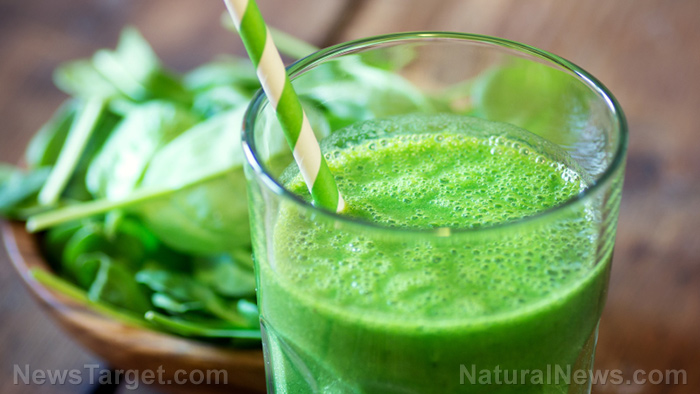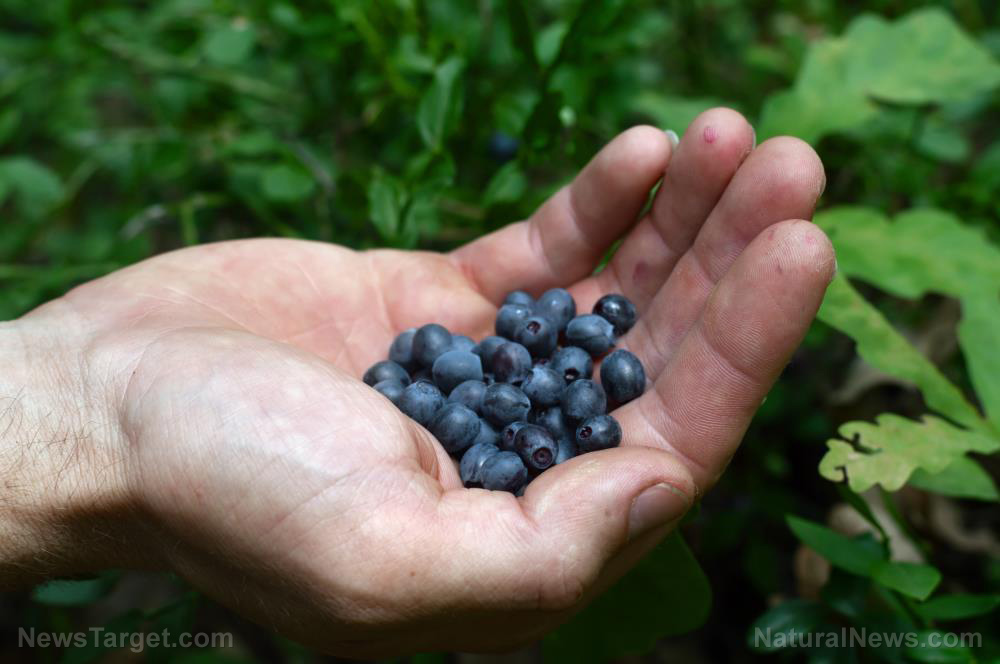
Advertisement
Spinach is a superfood that’s well-loved by health enthusiasts. It’s a versatile ingredient that’s full of vitamins, minerals and antioxidants, and it can be used to make a tasty salad or even a refreshing green juice.
Spinach juice is great for when you need a quick nutrient boost. The beverage also offers many benefits, like boosting your eye and skin health.
Here are five science-backed benefits of consuming spinach juice.
It’s full of beneficial antioxidants
Drinking spinach juice helps boost your antioxidant intake. Antioxidants are compounds that fight unstable molecules called free radicals, thus protecting you from oxidative stress and chronic disease.
Spinach is rich in antioxidants like lutein, beta carotene, coumaric acid, violaxanthin and ferulic acid.
The results of a small, 16-day study involving eight volunteers revealed that consuming at least eight ounces (240 mL) of spinach daily prevented oxidative damage to DNA.
It helps boost eye health
Spinach juice is high in lutein and zeaxanthin, two antioxidants that are important for maintaining healthy vision.
According to some studies, lutein and zeaxanthin can help prevent age-related macular degeneration, a common condition that causes progressive vision loss.
A review of six studies suggests that increased intake of zeaxanthin and lutein may help lower the risk of cataracts, an eye condition that clouds and blurs the lenses.
Spinach juice is also chock-full of vitamin A, which helps promote eye health. A vitamin A deficiency can cause dry eyes and night blindness.
In severe cases, the eye continues to dry out and tissues may also build up in the cornea. A buildup in your cornea can cause haziness and lesions, and it may eventually destroy the cornea.
While the exact amount varies depending on how much water you use and whether you add other ingredients, juicing four cups (120 grams) of raw spinach usually produces about one cup (240 mL) of juice.
One cup of spinach juice provides about 63 percent of the Daily Value (DV) for vitamin A.
It promotes healthy hair and skin
The vitamin A in spinach juice helps regulate skin cell generation and produces mucous to fight infections.
Additionally, a one-cup serving of spinach juice contains about 38 percent of the DV for vitamin C, which is an essential water-soluble vitamin that also functions as an antioxidant.
According to research, vitamin C helps protect the skin against oxidative stress, inflammation and skin damage. These factors can accelerate skin aging.
Vitamin C is important for the synthesis of collagen, a connective tissue protein that promotes wound healing and skin elasticity. The vitamin also helps boost iron absorption and prevents hair loss associated with iron deficiency.
It helps reduce blood pressure
Spinach juice is full of naturally occurring nitrates which help dilate the blood vessels. This may help lower blood pressure and boost blood flow.
In a seven-day study involving 27 participants, researchers discovered that consuming spinach soup daily helped lower blood pressure and arterial stiffness.
In another small study, researchers observed 30 volunteers who consumed nitrate-rich spinach. The drink lowered the systolic blood pressure of the volunteers and improved their nitric oxide status.
A one-cup serving of spinach juice also contains more than 14 percent of the DV for potassium. This essential mineral helps regulate blood pressure by controlling the amount of sodium excreted through urine.
It helps fight cancer
Some studies suggest that certain compounds in spinach may help prevent cancer cell growth.
In a two-week study in mice, researchers found that spinach juice reduced the number of colon cancer tumors by at least 56 percent.
Findings from a different mouse study also revealed that monogalactosyl diacylglycerol (MGDG), a spinach compound, helped boost the effects of radiation therapy on pancreatic cancer cells.
In human studies, consuming more leafy greens has been found to reduce the risk of breast, colorectal, lung and prostate cancer.
Considerations before drinking spinach juice
Spinach offers many health benefits, but there are some things to consider before making spinach juice.
- The bulk of available research is focused on spinach itself, not spinach juice. Thus, further studies on the benefits of spinach juice are needed.
- Juicing removes most of spinach’s fiber content, which could reduce its benefits. According to studies, dietary fiber helps improve blood sugar control, weight loss and blood pressure and cholesterol levels. Fiber can also protect against certain digestive disorders like acid reflux, constipation, diverticulitis and hemorrhoids.
- Spinach is full of vitamin K, but large amounts of the vitamin can interfere with blood thinners like warfarin. If you’re taking blood thinners, consult a healthcare professional before incorporating spinach juice into your regular diet.
- When purchasing spinach juice, always check the label. Some products may be high in added sugar, which is bad for you.
- Like other superfoods, spinach juice should not be used as a meal replacement because it doesn’t have all the nutrients you need to get from your diet. Instead of just drinking spinach juice, make it a part of a healthy diet and eat lots of different whole fruits and vegetables.

Spinach juice recipes to try
Here are two juice recipes to try to boost your antioxidant intake naturally.
Spinach-apple juice
This nutritious spinach-apple juice is full of calcium for bone health and vitamins A and C for antioxidants.
If you don’t have a juicer, skip to the juicing variation below using a blender.
Ingredients for 2 servings:
- 1?1/2 cups spinach
- 2 green apples, cut into eighths
- 1/2 grapefruit, peeled, white pith removed
- 2 large celery stalks
- 1 1-inch piece peeled fresh ginger
- Ice (optional)
Preparation:
- Use a juicer to process the ingredients in this order: spinach, grapefruit, apples, ginger and celery.
- Fill two glasses with ice, then pour the juice into the glasses. Serve immediately.
If you don’t have a juicer, follow the steps below to make spinach-apple juice with a blender:
Preparation:
- Coarsely chop all the ingredients.
- Place the soft and juice ingredients in the blender, then process until liquefied.
- Add the remaining ingredients to the mixture and blend until liquefied.
- Cut two 24-inch-long pieces of cheesecloth, then unfold each piece and stack the pieces on top of each other. Fold the double stack in half so you have a four-layer stack of cheesecloth.
- Line a large bowl with the cheesecloth, then pour the contents of the blender into the center. Gather the edges of the cloth together in one hand, then use your other hand to twist and squeeze the bundle to extract all the juice from the pulp. Wear a pair of rubber gloves so the juice doesn’t stain your hands.
Fruity spinach juice
Don’t have a juicer? This recipe uses a blender to turn superfoods like spinach, kale, lemon, apples and cucumber into a refreshing, fruity juice.
Ingredients:
- 2 cups spinach
- 1 cup kale
- 1 apple
- 1 cucumber
- 1 lemon, juiced
- 7 celery stalks
- 1/3 cup mint leaves
- 1/3 cup water
Preparation:
- Cut all the ingredients into pieces and place them in a blender.
- Process the ingredients at high speed until the mixture has a smooth consistency. Pause the blender occasionally to redistribute the fruits and vegetables so the mixture blends properly.
- Place a piece of cheesecloth over a bowl, then pour the mixture into the cheesecloth.
- Gather the ends of the cheesecloth together and squeeze to remove the juice from the pulp.
- Pour the juice into a glass, add ice if you want to and serve.
Spinach juice is full of antioxidants and beneficial compounds that can protect your eyes from damage, decrease blood pressure and improve your hair and skin health. Follow a balanced diet and drink spinach juice to boost your overall well-being.
Sources:
Advertisements







